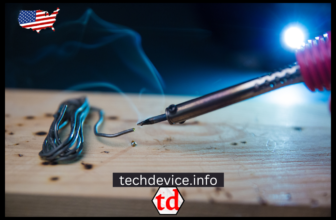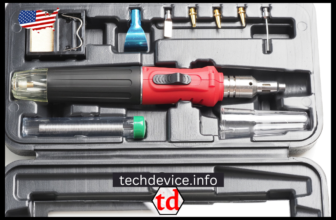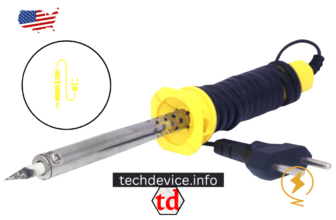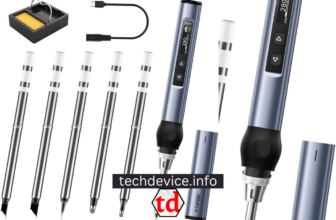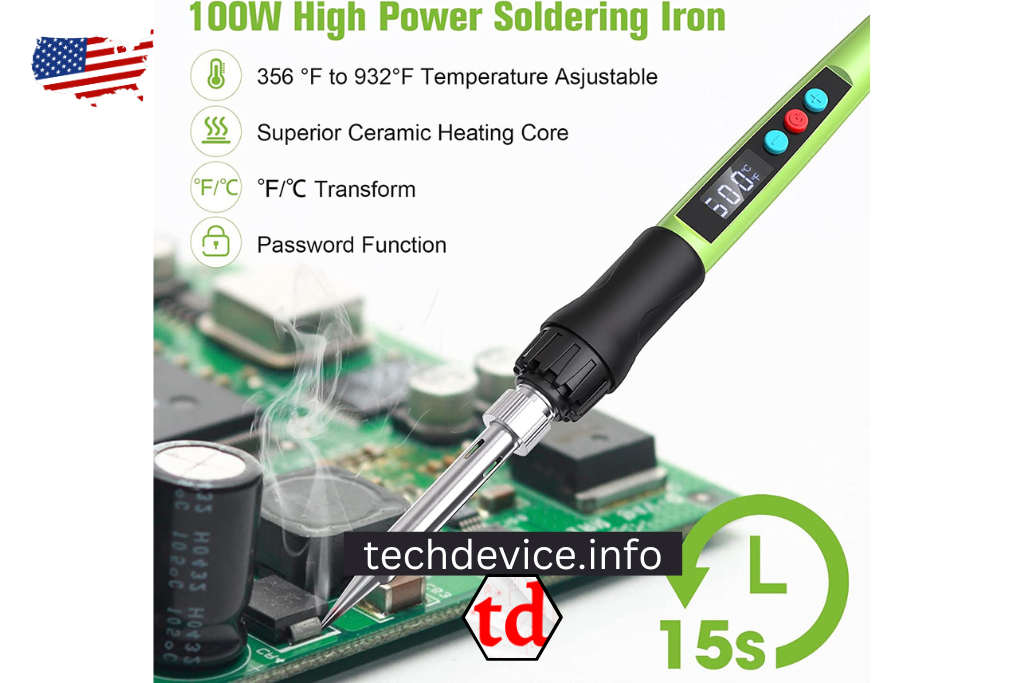
What is Soldering Iron
Soldering irons are an essential tool for joining metals. Soldering is a way to combine two or more metal pieces by melting a filler metal.
What is Soldering Iron?
Soldering is a way to combine two or more metal pieces by melting a filler metal (called “solder”) and letting it run into the joint. Most of the time, you only need a soldering gun to do this. Electrical signals or energy can flow between the parts by making a solid, conductive link. It serves in many fields, such as car repair, jewellery making, and plumbing. For example, it helps join or fix metal pieces when working with electronics or electricity. It is essential to making safe electrical connections that last a long time, so pros and amateurs often use it. This piece aims to thoroughly examine the soldering iron, including its uses, construction, types, and how to use it safely.
When you use a soldering iron to join two or more pieces of metal, you need a replacement metal. Because solder melts more readily and at a lower temperature than the metals it unites, it flows smoothly between them to form a solid connection.
Soldering irons serve for many things, such as:
- There are circuit boards, lines, and plugs.
- It makes chains, bracelets, and earrings, among other types of jewellery.
- Soldering is how people who work with metal put pipes, sheets, and bars together.
- It makes things from wood, like furniture, toys, and decorations.
- Soldering is used in many hobbies, like building models, using radio control, and making robots.
- These are valuable tools for a wide range of tasks. They are easy to use and inexpensive, so professionals and beginners can use them.
Here are some things you can do with a soldering iron:
Connects people in ways that last: When you solder, you join two pieces of metal in a way that is strong and will last for a long time. Because the solder melts and flows between the pieces of metal, covering any gaps and making a smooth, even surface.
Soldering is a valuable tool for many projects because it joins metal, plastic, and wood, among other things. Because it is cheap, soldering irons are a good choice for many jobs. Soldering is an easy skill to learn, and many tools out there to help newbies.
Parts of Soldering Iron
To make a soldering iron, you will need the following parts.
Handle
The heat-resistant rubber or plastic handle holds the iron. The handle keeps the user from getting burned by the hot tip of the iron.
Heating Element
High-resistance nichrome or ceramic wire coils generate heat. When electricity runs through the heating element, it gets hot and sends it to the iron’s tip.
Tip
The tip, also called the bit, is the part of the soldering iron that does the work. It’s commonly copper or iron, which conduct heat well. There are tips of different sizes and shapes for other soldering jobs.
Power Cord
The power cord ties it to an electrical outlet so that electricity can flow through the iron and heat it.
Kinds of Soldering Iron
There are different kinds of soldering irons, and each one is best for a specific job. Here are a few well-known ones.
Standard Soldering Iron
It is possible to utilize this kind, the most prevalent one, for different soldering tasks.
Adjustable-Temperature
These irons let you control the temperature of the tip. It makes them perfect for delicate soldering jobs, like working with fragile computer parts that need precise temperature settings.
Soldering Stations
These all-in-one systems come with a soldering iron, a temperature control unit, and other features like digital displays, fixed temperatures, and holders for the soldering iron. Most professionals prefer soldering stations because they can keep the temperature more stable.
When choosing a solder, think about how to use it. You can use an iron without controls for easy welding jobs. But if you need to do more sensitive work, choose a soldering station or an iron with temperature control.
Also, it would help if you considered how big and heavy the soldering iron is. Depending on the user’s preferences and the intended use, they can be small and light to make them easy to carry or big and heavy to make them more stable.
How to Pick It?
Here are some more things to think about when picking a soldering iron.
Wattage
How fast the iron heats up depends on how many watts it has. Irons with more power heat up quickly but may be harder to use.
Size of the tip
The tip’s size determines how big the solder joints are. A smaller piece of information is better for delicate work, while a bigger bonus is better for a bigger job.
Heat Retention
The iron’s ability to keep its heat after being turned off affects how long it stays hot. It is essential when you are soldering several parts one after the other.
Mechanics
The mechanics of a soldering iron affect how easy it is to use. Look for an iron that is easy to hold and spreads its weight evenly.
Considerations Before Buying a Soldering Iron
Following safety rules to avoid crashes and injuries is essential when using it. Some primary safety concerns are:
Preparing the Workspace
Ensure you have a place with good airflow and a surface that won’t catch fire. Take away anything that could catch fire.
Eye protection
Wear safety goggles to keep solder and other things from getting in your eyes.
Protection from heat
We use heat-resistant gloves or finger guards when handling hot components.
Power Off and Let the Cool
Always turn the soldering iron off and unplug it when not in use. Let it cool down before you put it away or work on it.
Soldering Fume Extraction
If you don’t want to breathe in dangerous fumes, using a fume extractor or working in a room with good airflow is best.
Types and Size
Soldering irons come in many different kinds, sizes, and styles. Pros and cons vary by type. You must understand these differences to choose the best iron. For example, it offers electronic variable temperature control. With the It feature, you can set the exact temperature. These irons have adjustable temperatures, making them versatile.
Features
Always buy a soldering iron with a few simple additions. For example, These have iron tips that are easy to change and work with a wide range of third-party iron tips. A product with a packing case would also be easy to take anywhere. So, buy a high-quality model with extra functions that will make it more useful.
Price
Consider price last. There are many types with prices that are easy on the wallet. Even though a cheap iron might not work well, you don’t need to spend a small amount of money on one of these tools. Most people will get great results from irons in the middle of the price range.
Conclusion
In conclusion, soldering irons are one of the most essential tools for joining metals. To ensure you can solder safely and well, you need to know what they are for, what kinds there are, and how to use them. By following best practices and safety rules, users can make soldered connections that are accurate and reliable while reducing the risk of accidents.


